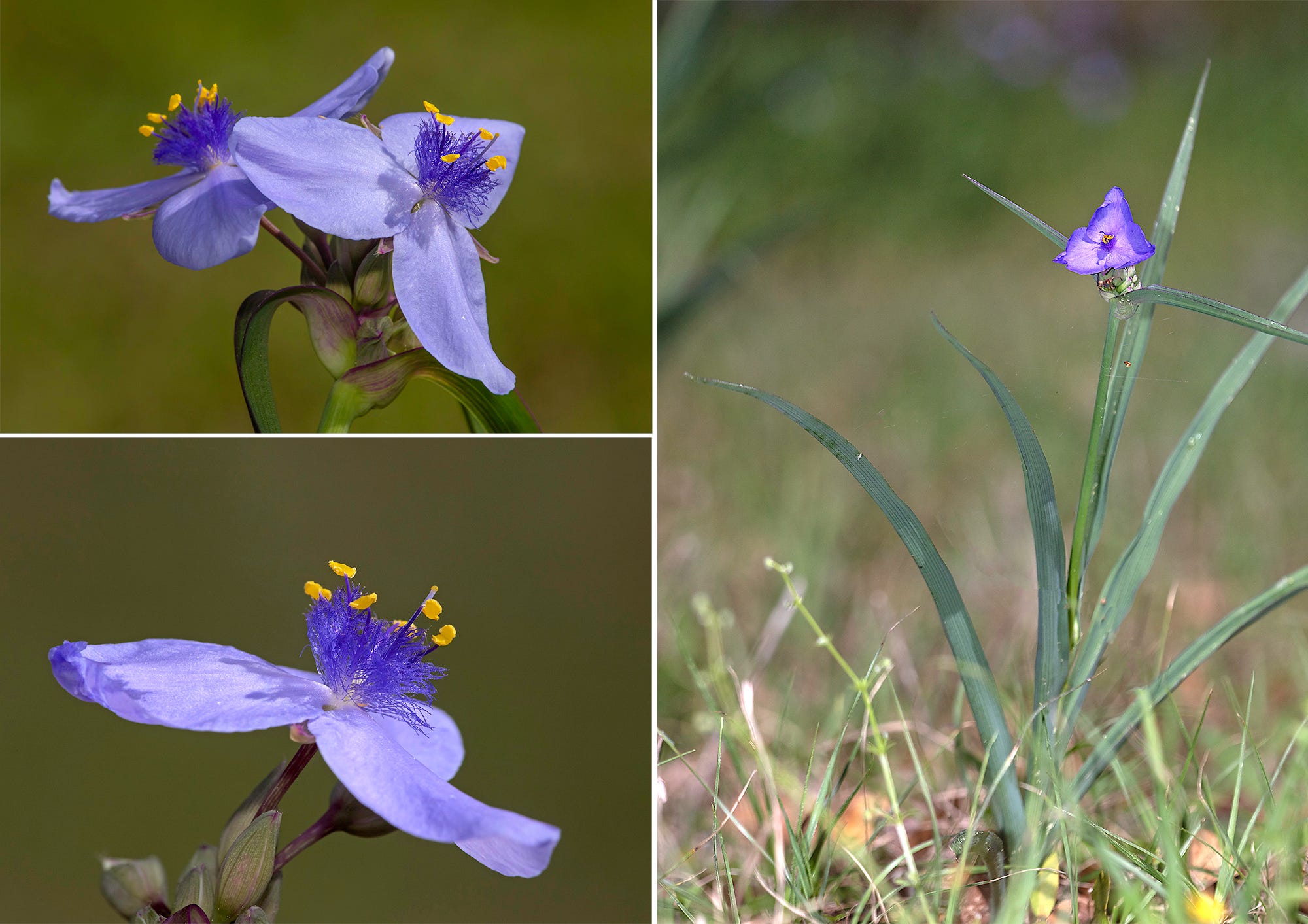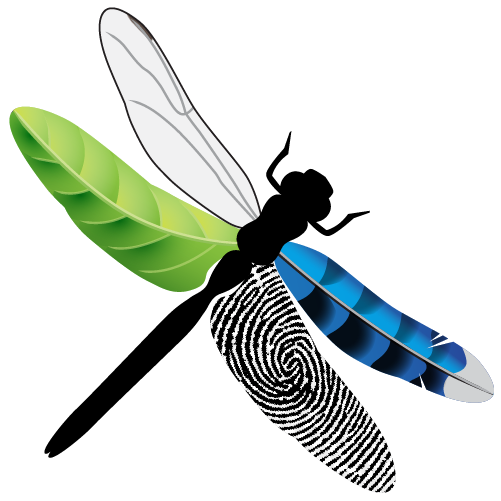IN THE exquisite drama of life known as a flower, the filaments are the among supporting cast members — literally. Each is a little stalk that supports a lead actor: the anther, which produces pollen in the theater of reproduction.
The anther atop its filament (together the stamen) often resembles a lollipop or a popsicle. Those are typical, slender filaments and their pollen-laden anthers pictured above — on Hepatica and Bloodroot. But nature is nothing if not unpredictable, even among the ordinary. Take, for example, the ornate, outrageous filaments of Ohio Spiderwort (Tradescantia ohiensis), known also as Bluejacket here in the American Southeast.
Flowers can indeed have crazy lace, but never had I come across filagree filaments like these. Only when I noticed a sweat bee gathering pollen from those raging yellow anthers did I discover the ornamentation, at which point I stopped photographing insects for the day because I needed absolutely nothing else from the world.
Except maybe some creative speculation.
Among flowers, complexities like this — “contrivances” as Darwin put it — usually foster either pollination or protection (from desiccation, for example, or assault by insects). In the case of these spiderworts, it could be a little of both.
For one thing, the lace might itself resemble pollen and therefore lure more insect pollinators. It might also serve to retain fallen pollen grains that would otherwise be lost to the pollinators (and therefore the plant). The frills do seem to serve as footholds to keep insects on the flower for longer visits — and therefore more apt to serve a role in reproduction. (Tagawa 2023).
Then again, the lace might protect and ration the plant’s pollen supply. Larger bees sometimes bundle anthers together in order to more efficiently harvest pollen. The frill could hinder that gathering, allowing the plant to save more of its pollen for reproduction. (Faden 1992).
Whatever the case, I don’t need much explanation at this point. Oddly, for years I’ve walked past this abundant plant — lovely enough with its three violet petals — never noticing its contrivances. Even the roadside can be terra and flora incognita. Here it is for you from other angles. Enjoy the journey.
References and Postscript
Faden, R. B. 1992. Floral Attraction and Floral Hairs in the Commelinaceae. Annals of the Missouri Botanical Garden, 79(1), 1992, 46-52. https://www.jstor.org/stable/2399808
Tagawa, K. 2023. Floral hairs of Tradescantia fluminensis (Commelinaceae) manipulate behavior of hoverflies for effective pollination. Plant Species Biology, 38(5), 2023, 277–282. https://doi.org/10.1111/1442-1984.12429
Spiderworts, which are monocots, are in the family Commelinaceae, all or most of which don’t offer pollinators any nectar. Which is probably why I have never seen a butterfly on a spiderwort. Bees and hoverflies (Syrphidae), however, seem to spend lots of time taking pollen from these plants.
Up next exclusively for paying subscribers to Chasing Nature: My wild encounter with one of the world’s most fascinating plants, Venus Flytrap (Dionea muscipula), rarely seen in its restricted ancestral habitat here in the U.S.








Bryan,
I quite enjoyed your observations and wonderful pics of Tradescantia, and posing just what those fluffy filaments might be all about. When in bloom in my yard it never fails to draw my immediate attention. It reminds me of my early botanical courses (at our Alma mater in Ann Arbor), when I learned that these very hairs are widely noted in biology as an example whereby one can view the cellular process of cytoplasmic streaming, courtesy of the huge aqueous vacuole of cells. (Widely depicted, even replete with music, on YouTube). Happy (almost) Spring! Mike
I must say that I am fixated on the dragonfly. Your creation?
I'm like the seedling getting ready to burst through the soil. My mind is getting ready to explode and spill onto the page.
I always knew this day would come. At times I feared it, afraid I would not be able to find my way back, return from the water several feet below, but glistening and shining and beckoning for me to take the long plunge.
This is my way of saying, I am going to happily set aside a large chunk of my day to read lengthy publications in full.
Substack is not a slot machine for the casual reader.
Thanks for posting.